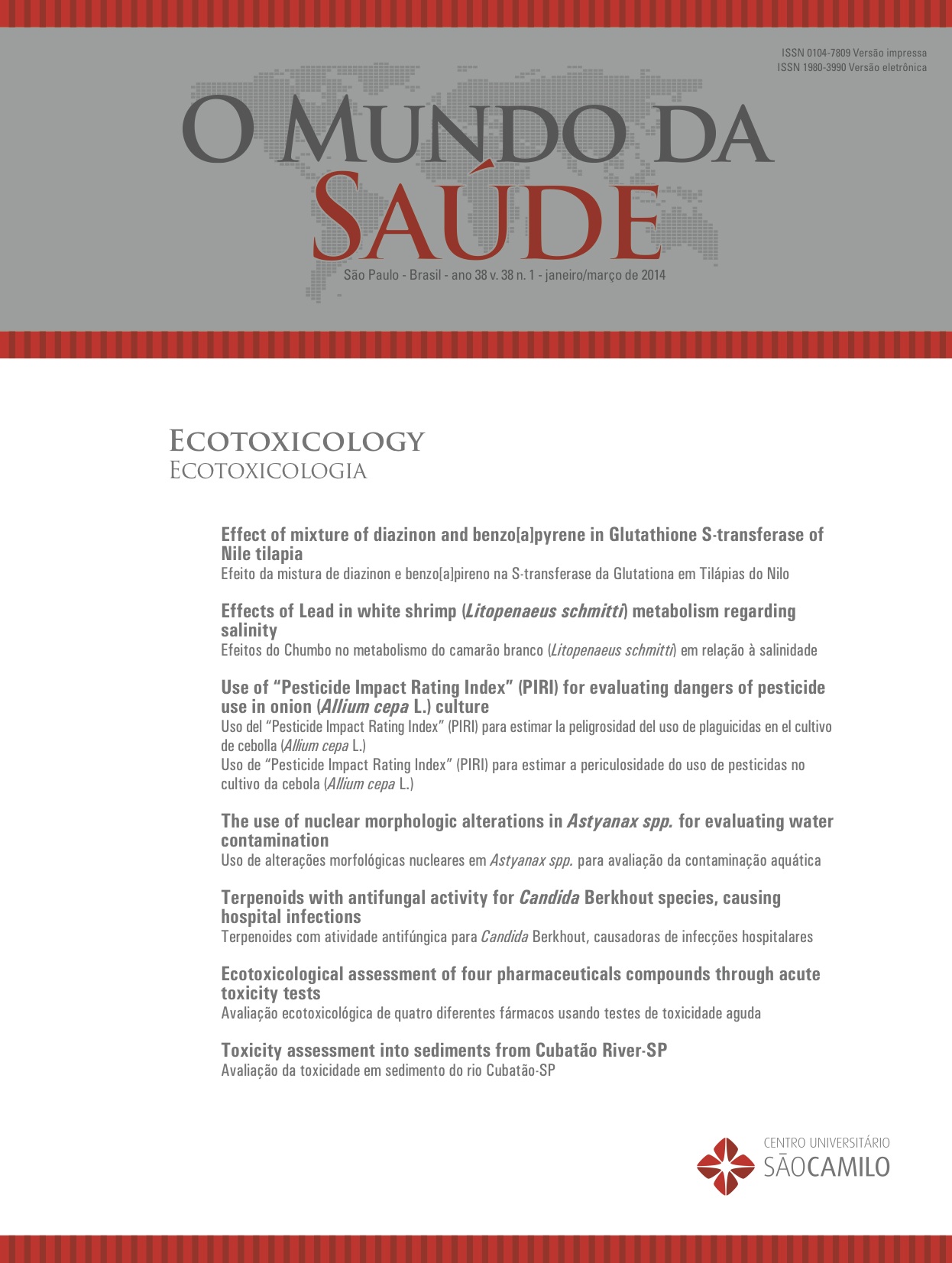The use of nuclear morphologic alterations in Astyanax spp. for evaluating water contamination
DOI:
https://doi.org/10.15343/0104-7809.20143801031039Keywords:
Citotoxicity, Immunologic, Industry, UrbanizationAbstract
Over the years, aquatics ecosystem have been suffering great losses because of being exposed to pollutants that cause irreversible
environmental impacts, both in rural and urban areas. In this context, the present study was conducted in two
urban areas of the city of Guarapuava (PR) and two rural areas of the city of Candói (PR) during 2013, aiming to assess
the impacts of different pollution sources. These impacts were quantified by micronucleus test, using fish individuals of
the genus Astyanax as bioindicators. Consistent variations in nuclear morphology were identified in erythrocytes of fishes,
more frequently in the most urbanized site, the Lagoa das Lágrimas, and in the rural area, the waterlogged in Jordão River.
The latter site is a major river that receives effluents from the entire Guarapuava city and from a factory of recycling paper,
located close to the sampled site. The Candoizinho River, a rural local protected by wide riparian vegetation, presented the
lowest damage rate, being a preserved area. A last sampled site was located in a semi-urbanized area within a university
campus. Organisms from this place showed intermediary damage rates. So, we concluded that industrial and urban pollution
can cause irreversible damages to health of individuals inhabiting this water flow.






























